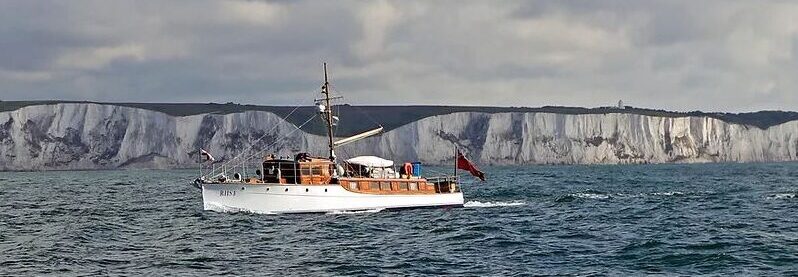
A talk by Ian Gilbert
At the outbreak of the Second World War, Britain sent the British Expeditionary Force across the Channel to help stem the advance of Hitler’s Wermacht into Belgium and France. The effort was in vain and by the 21st May 1940, British, French and Belgian troops had been forced to retreat and were trapped in an area around Dunkirk. An evacuation had to be arranged, without which Britain would have lost a major proportion of its army and ability to avoid defeat. Some 800 vessels were assembled to undertake the evacuation, varying from naval destroyers to a collection of cabin cruisers, speedboats and general river craft. It is the latter that became known as the Dunkirk Little Ships and between the 26th May and 4th June the 800 strong rescue armada returned 338,266 British and allied troops to Britain to fight again. But Churchill famously said “We must be very careful not to assign to this deliverance the attributes of a victory. Wars are not won by evacuations”.
Ian Gilbert is Hon. Vice Admiral of the Association of Dunkirk Little Ships. He actually owns one of the surviving vessels, the ‘Lady Lou’ based on the Thames near Weybridge. He is thus well placed to describe the events surrounding the evacuation, the little ships involved and the Association that keeps the surviving Little Ships afloat and their history remembered. Ian spent his career as an avionics engineer, starting in 1967 with British European Airways.
Heritage
Operation Dynamo
A talk by Ian Gilbert
At the outbreak of the Second World War, Britain sent the British Expeditionary Force across the Channel to help stem the advance of Hitler’s Wermacht into Belgium and France. The effort was in vain and by the 21st May 1940, British, French and Belgian troops had been forced to retreat and were trapped in an area around Dunkirk. An evacuation had to be arranged, without which Britain would have lost a major proportion of its army and ability to avoid defeat. Some 800 vessels were assembled to undertake the evacuation, varying from naval destroyers to a collection of cabin cruisers, speedboats and general river craft. It is the latter that became known as the Dunkirk Little Ships and between the 26th May and 4th June the 800 strong rescue armada returned 338,266 British and allied troops to Britain to fight again. But Churchill famously said “We must be very careful not to assign to this deliverance the attributes of a victory. Wars are not won by evacuations”.
Ian Gilbert is Hon. Vice Admiral of the Association of Dunkirk Little Ships. He actually owns one of the surviving vessels, the ‘Lady Lou’ based on the Thames near Weybridge. He is thus well placed to describe the events surrounding the evacuation, the little ships involved and the Association that keeps the surviving Little Ships afloat and their history remembered. Ian spent his career as an avionics engineer, starting in 1967 with British European Airways.
Details
Time
8:00pm
Contact
Address
Batchworth Lock Canal Centre
Canal Bridge
99 Church Street
Rickmansworth
WD3 1JD
Access via steps from bridge.
Chiltern Branch venue details (pdf)
Rickmansworth is well served by public transport. The Metropolitan Line from many London stations, and Chiltern Railways from Marylebone and Aylesbury. Also, frequent trains from Amersham, Chesham, Chalfont and Latimer, Chorleywood, and Watford.
Free Travel on the Tube to Rickmansworth if you are lucky enough to have a London Councils Freedom Pass, another good reason to attend our meetings!
Parking
4 closest places are (free parking after 6.30pm):
- Moor Lane layby (street parking)
- Church Street (street parking)
- Talbot Road (council car park) WD3 1EY
- Ebury Road (council car park) WD3 1BH
Please note: Do not park in Aquadrome for evening events as gates close at 8pm.
Unfortunately, there is no parking at Batchworth Lock. The Education centre is a log cabin building alongside the lock.


